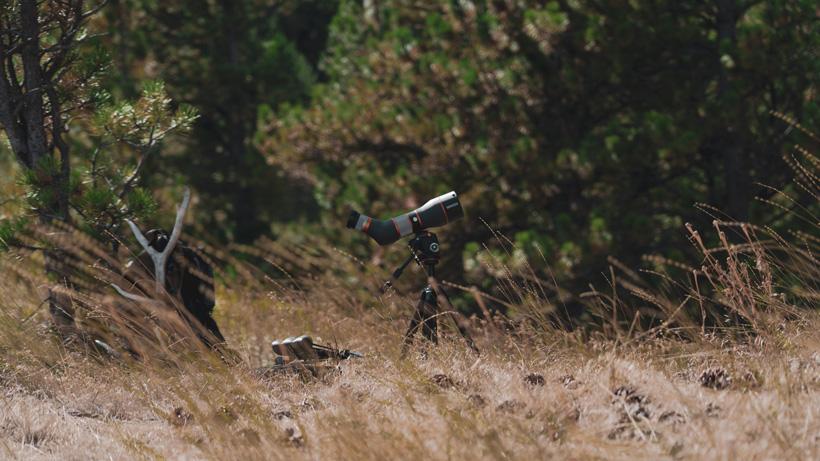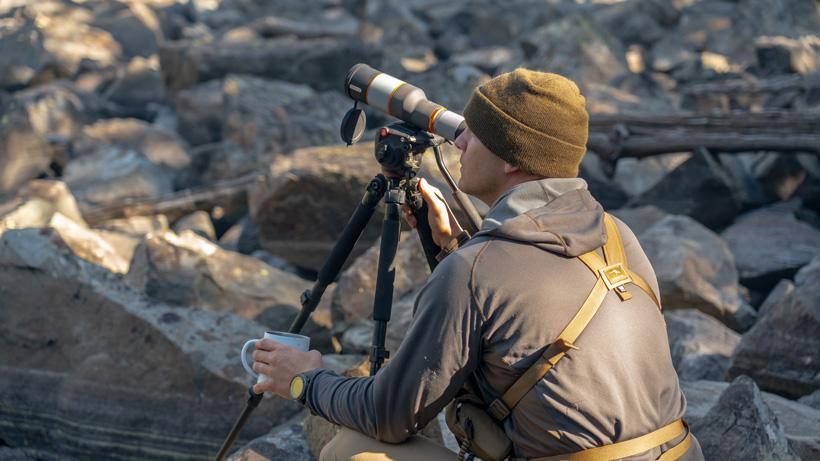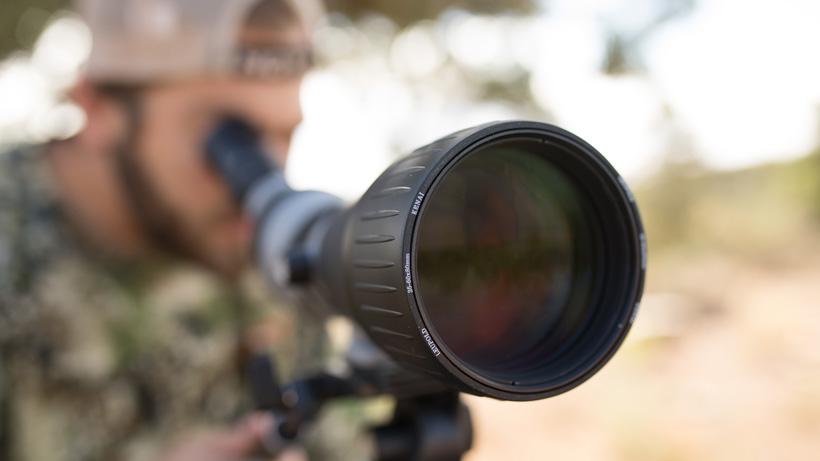







Photo credit: Brady Miller

Nowadays, as hunters, we are saturated with endless options when it comes to different types of glass. In aspects of price, objective sizes, light transmission percentages and brand, the list is quite dense. I have spent ample amounts of time behind a few different options when it comes to spotting scopes and I have found what I like and what I don’t like.
As a solo hunter, when I’m sitting around camp, I really start to think about how much my pack weighs and where I can shed weight, especially in the optics department. One thing I've found is that I originally started with the highest magnification optic—because more is better, right?—and just dealt with it in my pack, weighing me down. But now, with many companies releasing compact models, I have found myself wanting to try them to see how they compare to the big daddy 80+mm scopes. I have slowly allowed the compact options into my gear kits, which, in turn, has made me more and more attracted to them. However, I will point out that both have their roles depending on the hunt.
Let's start with the bigger spotters in the 80mm area. They are a blessing to have when trying to reach out and find animals. When using something in that higher magnification range you can really pick apart the terrain. Whether mule deer hunting, elk hunting or—one of my favorites—bear hunting, you can really dissect the terrain, diving deep into the sage or rocks to spot that ear twitch you need to give you the upper hand on those hard to find mature animals that have found ways to stay alive by essentially becoming ghosts.
The benefits definitely can outweigh the weight in those aspects. Guides who are putting clients on bighorn sheep, mountain goats, moose, etc., have come to love the ability to determine an animal’s age by reeling in that magnification ring to count annuli as well as length and width. However, typically, when I ask hunters what they are running in their optic department, I commonly find they are using something in the 20-60x85. With those larger objective lenses and higher-end glass, you can definitely pull in a lot of light, which is crucial come sunrise and sunset. Yet, with all those strengths, there must be a weakness: weight.
As a hunter who is slowly tuning my gear to become lighter, I always go to the optic section of my kit to scrape a little weight away. The old phrase “ounces are pounds and pounds are pain” has always made me want to be lighter as I start venturing more and more into extremely remote areas. For instance, a higher-end spotting scope can weigh up to 76 oz, such as the Zeiss Victory Harpia 22-65x85 Angled. Not only are they heavy, but with weight comes the space in the pack. They take up more room and make you think about where to put certain items to offset the weight in order to have a balanced pack. Even with that weight, I have built a high amount of confidence and comfortability behind the larger options.
Now, let's get into the other end of the spectrum: the little guys. Companies continue to add a compact option for those who are trying to still see out there a ways, but not have a boat anchor on their back. The smaller option market is a little thinner when it comes to magnification options—angled or straight as well as the manufacturer—but there are still great choices like my personal favorite, the Maven S.2 12-27x56 mm. I have used a compact model for the last year and, to my surprise, it has grown on me. When I find myself having to be weight conscious and more minimalist, I opt for the compact model. Any time that I have the small spotter in my pack I rarely feel like I'm carrying a spotter. Teamed up with glassing from a tripod with binos, then moving to the spotter once a target is seen, it’s a highly efficient combination. Now, you may not be able to see the eyelashes on a fly with it a mile away, but you can effectively judge whether or not the critter you're looking at is one you would like to take home with your tag. I always find myself using the compact model and being thoroughly impressed with how I double or even triple the distance seen with binos by adding it and not being penalized with having a spotter that’s almost half the weight of the big one I left in the truck. My biggest negative to the smaller option is light transmission. While it still allows me to glass before legal shooting light or—even after—it's just not the same. With objective lenses around 50-56 mm, there is most certainly a handicap compared to the 80 mm.
Photo credit: Brady Miller
All and all, I really enjoy using both. The big spotter works well when glassing from the truck, aging animals, long-range target shooting or when I really want to pick apart the mountainside. On the other hand, the compact spotter is my go-to when I want to double the distance of my binos while still lightening my pack when going on longer hunts. Preference and hunting style will ultimately decide which optic is right for you in your kit. I truly don’t believe that one is more superior to the other since each excels in their respective aspects. I would encourage you to try each one for yourself to make the best decision for your needs.